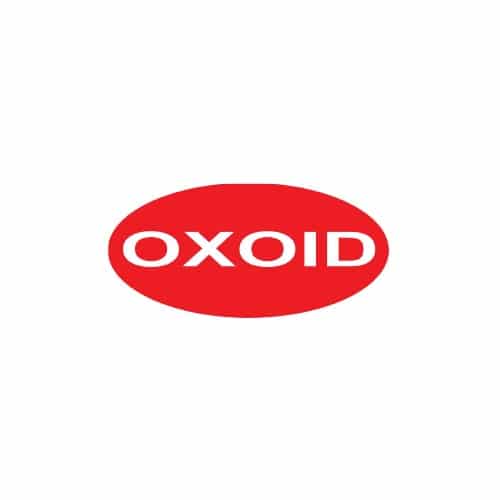
Brilliance Listeria Differential Supplement
RM0.00Brand:
Thermo ScientificTM OxoidTM
This product has been discontinued, please refer to SR0258E
Oxoid Brilliance Listeria Differential Supplement is added to Brilliance Listeria Agar Base, Mfr. No. CM1080E and Mfr. No. CM1080B, a chromogenic medium for the isolation and differentiation of Listeria
- Add to Brilliance Listeria Agar Base, Part No. CM1080B
- Each vial supplements 500mL of medium
Oxoid Brilliance Listeria Differential Supplement, Oxoid Composition
| Typical Formula | SR0228E | per litre |
| Lecithin solution | 20.0ml | 40.0ml |
Brilliance Listeria Agar, Oxoid Preparation:
Suspend 33.6g of Brilliance Listeria Agar Base (CM1080) in 480ml of distilled water. Mix well and sterilize by autoclaving at 121°C for 15 minutes. Cool the medium to 46°C and add one vial of Brilliance Listeria Selective Supplement, reconstituted as directed and one vial of Brilliance Listeria Differential Supplement. Mix well and pour into sterile Petri dishes.
Storage conditions and Shelf life
The dehydrated medium should be stored at 10-30°C and used before the expiry date on the label.
Prepared medium may be stored for up to 2 weeks at 2-8°C.
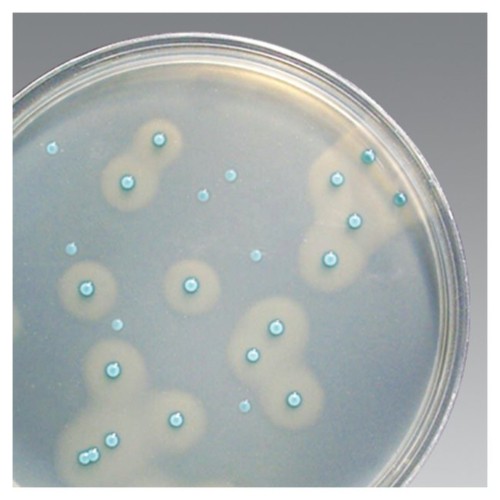
Brilliance Listeria Selective Supplement
RM0.00Brand:
Thermo ScientificTM OxoidTM
This product has been discontinued, please refer to SR0257E
Brilliance Listeria Selective Supplement is added to Brilliance Listeria Agar Base, Mfr. No. CM1080E and Mfr. No. CM1080B, a chromogenic medium for the isolation and differentiation of Listeria spp. in food samples.
- Add to Brilliance Listeria Selective Agar Base, Part No. CM1080B
- Each vial supplements 500mL of medium
Brilliance Listeria Selective Supplement, Oxoid Composition
| Typical Formula | SR0227E | per litre |
| Nalidixic acid | 13.0mg | 26.0mg |
| Polymyxin B | 5.0mg | 10.0mg |
| Ceftazidime | 3.0mg | 6.0mg |
| Amphotericin | 5.0mg | 10.0mg |
Brilliance Listeria Agar, Oxoid Preparation:
Suspend 33.6g of Brilliance Listeria Agar Base (CM1080) in 480ml of distilled water. Mix well and sterilize by autoclaving at 121°C for 15 minutes. Cool the medium to 46°C and add one vial of Brilliance Listeria Selective Supplement, reconstituted as directed and one vial of Brilliance Listeria Differential Supplement. Mix well and pour into sterile Petri dishes.
Storage conditions and Shelf life
The dehydrated medium should be stored at 10-30°C and used before the expiry date on the label.
Prepared medium may be stored for up to 2 weeks at 2-8°C.
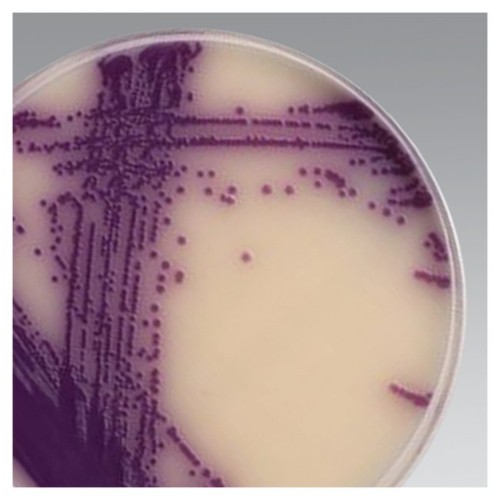
Brilliance Salmonella Agar Base 500g
RM2,173.00Brand:
Thermo ScientificTM OxoidTM
Thermo Scientific™ Brilliance Salmonella Agar Base is a chromogenic medium (formerly OSCM II) for isolation and presumptive identification of Salmonella spp. from food samples.
Brilliance Salmonella Agar Base, Oxoid Composition
| Typical Formula* | gm/ litre |
| Inhibigen™ mix | 14 |
| Chromogenic Mix | 25 |
| Agar | 15 |
| pH 7.3 ± 0.1 @ 25ºC |
Brilliance Salmonella Agar, Oxoid Preparation:
Suspend 27g of Brilliance Salmonella Agar Base in 500ml of distilled water. Add the contents of 1 vial of Salmonella Selective Supplement, resuspended as directed. Mix well and sterilise by bringing to the boil with frequent agitation. Cool to around 50ºC, mix well and pour into sterile Petri dishes.
NOTE: It is critical that the selective supplement is added prior to heating. When preparing volumes greater than 1 litre contact Oxoid Technical Support for directions.
Storage conditions and Shelf life
Brilliance Salmonella Agar should be stored in the tightly capped original container at 10-30ºC. When stored as directed, the un-opened products will remain stable until the expiry date printed on the packaging.
Precautions
Brilliance Salmonella Agar is for in vitro diagnostic use only, by experienced microbiologists. It must not be used beyond the stated expiry date, or if the product shows any sign of deterioration.
Sterilise specimens, equipment and media properly after use.
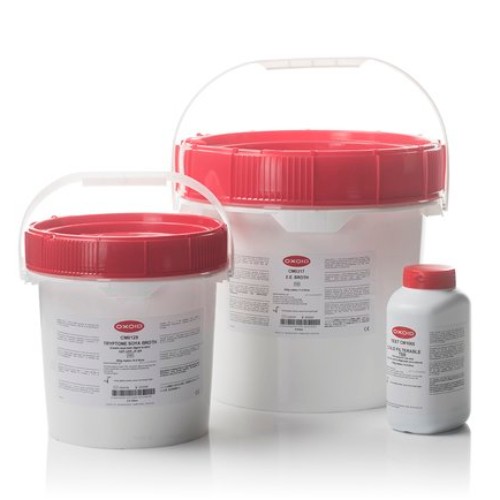
Brilliance UTI Clarity Agar 500g
RM3,766.00Brand:
Thermo ScientificTM OxoidTM
Easily isolate, enumerate, and presumptively identify common organisms associated with urinary tract infections using Thermo Scientific™ Brilliance™ UTI Clarity™ Agar. Organisms are differentiated through the utilization of two chromogenic substrates and/or tryptophan.
Brilliance UTI Clarity Agar, Oxoid Composition
| Typical Formula* | gm/ litre |
| Peptone | 9.00 |
| Chromogenic Mix | 17.00 |
| Tryptophan | 1.00 |
| Agar | 10.00 |
| pH 7.0 ± 0.2 @ 25ºC |
Brilliance UTI Clarity Agar, Oxoid Preparation:
To prepare the medium from the base, suspend 37g of Brilliance UTI Clarity Agar (CM1106) in 1 litre of distilled water. Mix well and sterilize by autoclaving at 121ºC for 15 minutes. Cool the medium to 50ºC and pour into sterile Petri dishes.
Storage conditions and Stability
Dehydrated Brilliance UTI Clarity Agar must be stored tightly capped in the original container at 10-30ºC.
Oxoid Brilliance UTI Clarity Agar plates should be stored in the original packaging, at the temperature stated on the pack or product specification, and protected from direct light.
When stored as directed, the unopened product will remain stable until the expiry date on the label. Locally prepared media can be stored for up to 2 weeks when made from CM1106 according to the manufacturer’s instructions and stored at 2-8ºC, out of direct sunlight. A longer shelf life may be attainable, but should be validated under the relevant, local manufacturing and storage conditions.
Precautions
Brilliance UTI Clarity Agar is for in vitro diagnostic use only, by experienced microbiologists. It must not be used beyond the stated expiry date, or if the product shows any sign of deterioration.
It should be noted that, as with all chromogenic media, organisms with atypical enzyme patterns may give anomalous reactions. The medium should be validated with locally prevalent strains to confirm sensitivity and specificity in the end-users hands, under local conditions.
A presumptive E. coli identification can be confirmed using DMAC indole reagent (do not use Kovac’s reagent as the colour of the pink colonies may be mistaken for the red colour of a positive indole result). The test should be performed on filter paper, not directly on the plate.
Sterilise specimens, equipment and media properly after use.

Brilliance™ Listeria Agar Base 500g
RM0.00Brand:
Thermo ScientificTM OxoidTM
This product has been discontinued, please refer to CM1212B
Brilliance Listeria Agar Base is a chromogenic medium for the isolation, enumeration, and presumptive identification of Listeria spp., including Listeria monocytogenes. Also available Chromogenic Listeria Selective Supplement, Part No. SR0227E and Chromogenic Listeria Differential Supplement, Part No. SR0228E.
Brilliance Listeria Agar Base, Oxoid Composition
| Typical Formula* | gm/litre |
| Peptone | 18.5 |
| Yeast extract | 4.0 |
| Sodium chloride | 9.5 |
| Sodium pyruvate | 2.0 |
| Lithium chloride | 15.0 |
| Maltose | 4.0 |
| X-glucoside chromogenic mix | 0.2 |
| Agar | 14.0 |
| pH 7.2 ± 0.2 @ 25°C |
Brilliance Listeria Agar, Oxoid Preparation:
Suspend 33.6g of Brilliance Listeria Agar Base (CM1080) in 480ml of distilled water. Mix well and sterilize by autoclaving at 121°C for 15 minutes. Cool the medium to 46°C and add one vial of Brilliance Listeria Selective Supplement, reconstituted as directed and one vial of Brilliance Listeria Differential Supplement. Mix well and pour into sterile Petri dishes.
Storage conditions and Shelf life
The dehydrated medium should be stored at 10-30°C and used before the expiry date on the label.
Prepared medium may be stored for up to 2 weeks at 2-8°C.
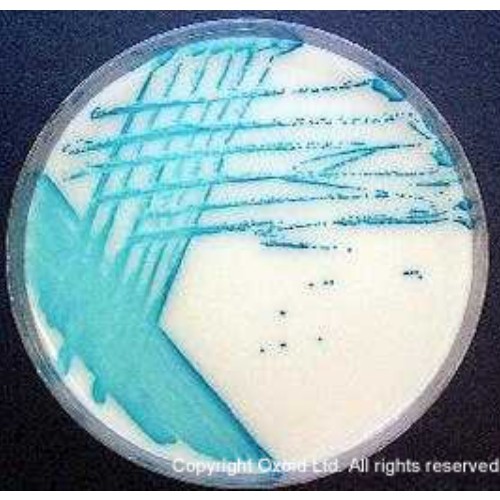
Brilliance™ UTI 500g
RM0.00Brand:
Thermo ScientificTM OxoidTM
Thermo Scientific™ Oxoid Brilliance™ UTI Agar (formerly Chomogenic UTI Agar ) is a chromogenic medium for the presumptive identification and differentiation of all the main micro-organisms that cause urinary tract infections (UTIs).
Brilliance UTI Agar, Oxoid Composition
| Typical Formula* | gm/litre |
| Peptone | 15.0 |
| Chromogenic mix | 26.3 |
| Agar | 15.0 |
| Final pH 6.8 ± 0.2 @ 25°C |
Brilliance UTI Agar, Oxoid Preparation:
Suspend 56.3g of Brilliance UTI Agar in 1 litre of distilled water, mix well and sterilise by autoclaving at 121°C for 15 minutes. Cool to 50°C and mix well before pouring plates.
Storage conditions and Shelf life
Dehydrated Brilliance UTI Agar must be stored tightly capped in the original container at 10-30ºC.
Oxoid Brilliance UTI Agar plates should be stored in the original packaging, at the temperature stated on the pack or product specification, and protected from direct light.
When stored as directed, the unopened product will remain stable until the expiry date on the label. Locally prepared media can be stored for up to 2 weeks when made from CM0949 according to the manufacturer’s instructions and stored at 2-8ºC, in the dark. A longer shelf life may be attainable, but should be validated under the relevant, local manufacturing and storage conditions.

Brilliant Green Agar (Modified) 500g
RM507.00Brand:
Thermo ScientificTM OxoidTM
Select and identify salmonellae (other than Salmonella Typhi) from food, feed and water samples with Thermo Scientific™ Oxoid™ Modified Brilliant Green Agar (Dehydrated). The modified formula provides improved inhibition of Escherichia coli and Proteus species. The medium has been widely assessed in Europe and has been used in ISO standards.
Brilliant Green Agar (Modified), Oxoid Composition
| Typical Formula* | gm/litre |
| `Lab-Lemco’ powder | 5.0 |
| Peptone | 10.0 |
| Yeast extract | 3.0 |
| Disodium hydrogen phosphate | 1.0 |
| Sodium dihydrogen phosphate | 0.6 |
| Lactose | 10.0 |
| Sucrose | 10.0 |
| Phenol red | 0.09 |
| Brilliant green | 0.0047 |
| Agar | 12.0 |
| pH 6.9 ± 0.2 @ 25°C |
Brilliant Green Agar (Modified), Oxoid Preparation:
Suspend 52g in 1 litre of distilled water. Heat gently with occasional agitation and bring just to the boil to dissolve the medium completely. DO NOT AUTOCLAVE. Cool to 50°C, mix well and pour plates.
Storage conditions and Shelf life
Store the dehydrated medium at 10-30°C and use before the expiry date on the label.
Store the prepared plates of medium at 2-8°C.
Precautions
Lactose-fermenting salmonellae may be present in foods.
Salmonella typhi and Shigella species may not grow on this medium.
Proteus, Citrobacter and Pseudomonas species may mimic enteric pathogens by producing small red colonies.
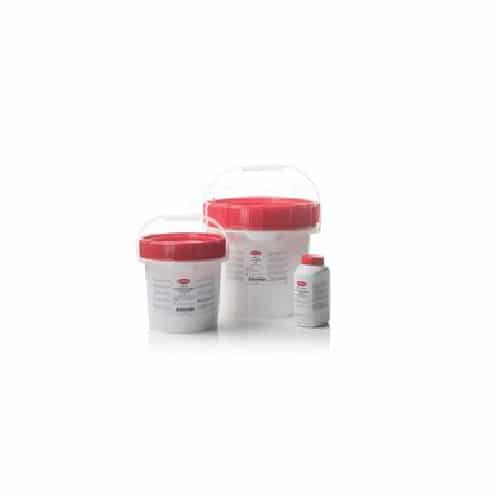
Brilliant Green Agar 500g
RM474.00Brand:
Thermo ScientificTM OxoidTM
Oxoid Brilliant Green Agar (Kauffmann Medium) is used for increased recovery and selective isolation of Salmonella spp. other than S. Typhi.
- Also available Sulphamandelate Supplement, Part No. SR0087E
Brilliant Green Agar, Oxoid Composition
| Typical Formula* | gm/litre |
| Proteose peptone | 10.0 |
| Yeast extract | 3.0 |
| Lactose | 10.0 |
| Sucrose | 10.0 |
| Sodium chloride | 5.0 |
| Phenol red | 0.08 |
| Brilliant green | 0.0125 |
| Agar | 12.0 |
| pH 6.9 ± 0.2 @ 25°C |
Brilliant Green Agar, Oxoid Preparation:
Suspend 50g in 1 litre of distilled water. Bring to the boil to dissolve completely. Sterilise by autoclaving at 121°C for 15 minutes.
Storage conditions and Shelf life
Store the dehydrated medium at 10-30°C and use before the expiry date on the label.
Store the prepared plates of medium at 2-8°C.
Precautions
Lactose-fermenting salmonellae may be present in foods.
Salmonella typhi and Shigella species may not grow on this medium.
Proteus, Citrobacter and Pseudomonas species may mimic enteric pathogens by producing small red colonies.

Brilliant Green Bile 2% Broth 500g, Oxoid
RM871.00Brand:
Thermo ScientificTM OxoidTM
Oxoid Brilliant Green Bile Broth 2% is used for detection or confirmation of presence of members of coli-aerogenes group.
- Recommended for 44°C confirmatory test for Escherichia coli
Brilliant Green Bile Broth 2%, Oxoid Composition
| Typical Formula * | gm/litre |
| Peptone | 10.0 |
| Lactose | 10.0 |
| Ox bile (purified) | 20.0 |
| Brilliant green | 0.0133 |
| pH 7.4 ± 0.2 @ 25°C |
Brilliant Green Bile Broth 2%, Oxoid Preparation:
Dissolve 40g in 1 litre of distilled water. Mix well, distribute into containers fitted with Durham’s tubes and sterilise by autoclaving at 121°C for 15 minutes.
Do not autoclave double stregnth medium. The alternative procedure is to heat the dissolved broth at 100°C for 30 minutes.
Storage conditions and Shelf life
Store the dehydrated medium at 10-30°C and use before the expiry date on the label.
Store the prepared tubes of broth at 2-8°C.
Precautions
Do not autoclave double-strength broth.
Gram-positive sporing organisms may produce gas if the bile/brilliant green inhibition is attenuated by food material.
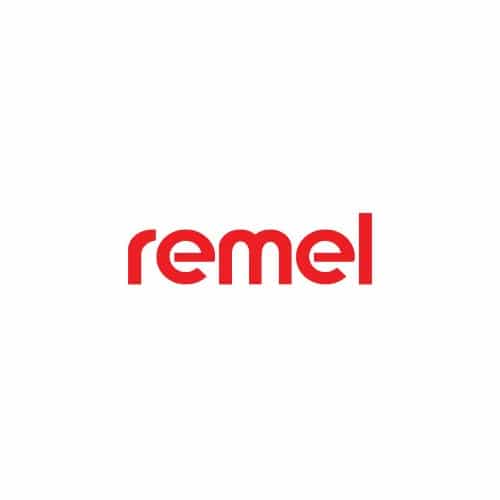
Brom Thymol Blue (1%) BTL/25ml
RM0.00Brand:
Thermo Scientific™ Remel™
Thermo Scientific™ Remel Brom Thymol Blue is a pH indicator for use with microbiological culture media and for confirmation of negative reactions in C-H-O Carbohydrates.

Brucella Medium Base 500g
RM379.00Brand:
Thermo ScientificTM OxoidTM
For the preparation of serum-dextrose-antibiotic medium for the cultivation and isolation of Brucella using Brucella Selective Supplement SR0083 or SR0209. Without antibiotics, it may be used in conjunction with the Cruickshank dyestrip method for differentiation between strains.
Brucella Medium Base, Oxoid Composition
| Typical Formula* | gm/litre |
| Peptone | 10.0 |
| `Lab-Lemco’ powder | 5.0 |
| Glucose | 10.0 |
| Sodium chloride | 5.0 |
| Agar | 15.0 |
| pH 7.5 ± 0.2 @ 25°C |
Brucella Medium, Oxoid Preparation:
Suspend 45 g in 1 litre of distilled water. Bring to the boil to dissolve completely. Sterilise by autoclaving at 121°C for 15 minutes. Cool to 50°C and add 5% of inactivated Horse Serum (i.e. Horse Serum held at 56°C for 30 minutes). Mix well before pouring.
Storage conditions and Shelf life
Store the dehydrated medium at 10-30°C and use before the expiry date on the label.
Store the prepared agar plates at 2-8°C.
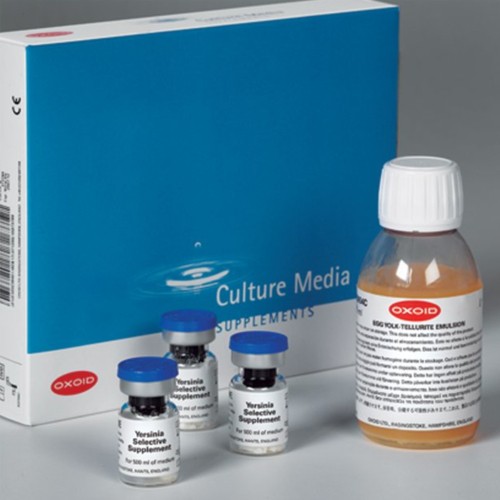
Brucella Selective Supplement 1 x 10 Vials
RM810.00Brand:
Thermo ScientificTM OxoidTM
Oxoid Brucella Selective Supplement is used for the isolation of Brucella spp.
- Add to Blood Agar Base No. 2, Part No. CM0271B; Columbia Blood Agar Base, Part No. CM0331B; or Brucella Medium Base, Part No. CM0169B
- Each vial supplements 500mL of medium
Brucella Selective Supplement, Oxoid Composition
| Vial contents (each vial is sufficient for 500ml of medium) | |
| Polymyxin B | 2,500 IU |
| Bacitracin | 12,500 IU |
| Cycloheximide | 50 mg |
| Nalidixic acid | 2.5 mg |
| Nystatin | 50000 IU |
| Vancomycin | 10 mg |
Brucella Medium, Oxoid Preparation:
Reconstitute supplement as directed. Incubate for 10-15 minutes at 35°C. Mix thoroughly and immediately add the vial contents to 500 ml of sterile Oxoid Brucella Medium Base, cooled to 50°C together with 5-10% v/v sterile inactivated horse serum SR0035 and 1-5% w/v of a filter-sterilised 10% solution of dextrose. Mix well and pour into sterile petri dishes.
Storage conditions and Shelf life
Store the dehydrated medium at 10-30°C and use before the expiry date on the label.
Store the prepared agar plates at 2-8°C.

Bst 2.0 DNA Polymerase
Brand:
New England Biolabs
Bst 2.0 DNA Polymerase displays improved amplification speed, yield and salt tolerance
- Optimized for Loop-Mediated Isothermal DNA Amplification (LAMP)
- Improved amplification reaction properties compared to Bst DNA Polymerase
- Fast polymerization
- Flexible reaction conditions including a higher salt tolerance and thermostability, as compared to wild-type Bst DNA Polymerase, Large Fragment (NEB #M0275)
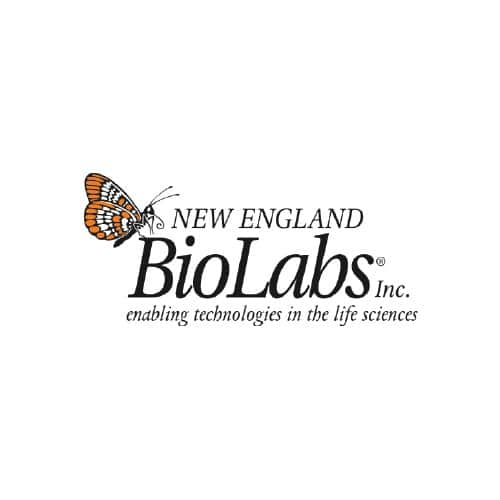
Bst 2.0 WarmStart DNA Polymerase
Brand:
New England Biolabs
Optimized for Loop-Mediated Isothermal Amplification (LAMP)
- Consistent amplification performance with the convenience of room temperature setup
- WarmStart® technology eliminates off-target amplifilcation and offers increased reaction efficiency
- Optimal reaction performance from 60-72 °C
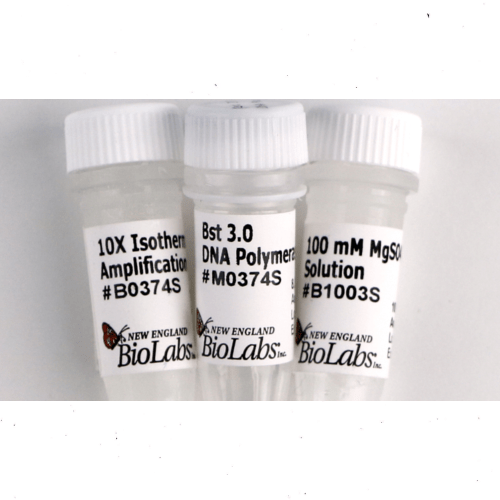
Bst 3.0 DNA Polymerase
Brand:
New England Biolabs
Bst 3.0 DNA Polymerase demonstrates robust performance even in high concentrations of amplification inhibitors and features significantly increased reverse transcriptase activity compared to Bst DNA Polymerase.
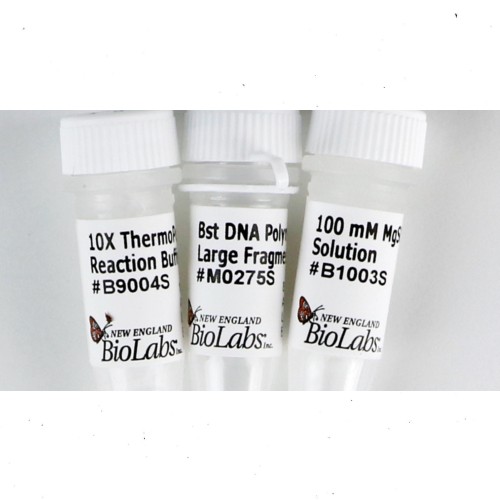
Bst DNA Polymerase Lg Frag
Brand:
New England Biolabs
The original polymerase for Loop-Mediated Isothermal Amplification (LAMP)
- Modified to retain 5´ → 3´ polymerase activity while lacking 5´ →3´ exonuclease activity
- Suitable for applications requiring thermophilic strand displacement
- Supplied with ThermoPol® Reaction Buffer for high product yields in demanding conditions
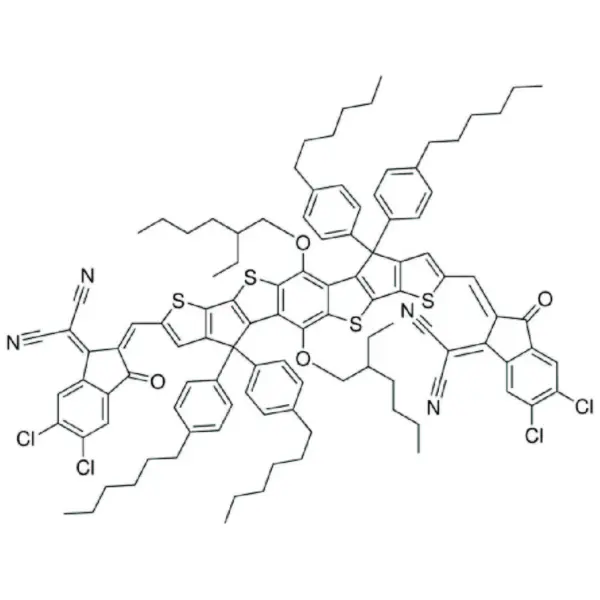
BT-CIC – Sigma-Aldrich
RM3,861.00Brand:
Sigma-Aldrich
Synonyms
4,4,10,10-tetrakis(4-hexylphenyl)-5,11-(2-ethylhexyloxy)-4,10-dihydrodithienyl[1,2-b:4,5b′ ]benzodithiophene-2,8-diyl)bis(2-(3-oxo-2,3-dihydroinden-5,6-dichloro-1-ylidene)malononitrile), NFA147, PCE147
CAS No
2197167-51-2
General Description
BT-CIC is a highly efficient, ultra-narrow bandgap, NIR absorbing, non-fullerene acceptor, designed to use in high performance organic photovoltaic devices.
A recently reported tandem cell, employing BT-CIC as the non-fullerene acceptor and PCE-10 as donor for the back cell showed an PCE of 15%.
Device performance:
Tandem [Front] (170 nm DTDCPB:C70 + ARC) [Back]PCE-10:BTCIC (1:1.5, 75 nm)
Jsc=13.3 ± 0.3 mA/cm2
Voc=1.59 ± 0.01 V
FF=0.71± 0.01
PCE=15.0% ± 0.3%
ARC: an antireflection coating
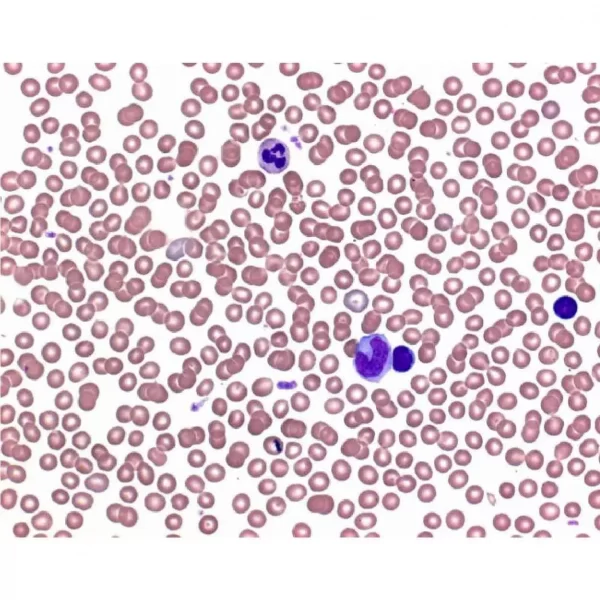
Buffer tablets pH 6.8, Merck
RM409.00Brand:
Merck
Description
Buffer tablets with a pH of 6.8 are recommended for the preparation of buffer solutions according to WEISE for the staining of blood smears. These tablets are used to make buffer solutions and pH-buffered staining solutions, specifically phosphate buffer solutions, which are commonly used in hematology. They are also used to dilute staining solutions and rinse stained samples during the staining process.
100 buffer tablets are sufficient for preparing 100 liters of buffer solution, and each solution can remain stable for up to four weeks. The buffer tablets according to WEISE are in vitro diagnostic products that are CE registered.

Buffer tablets pH 7.2, Merck
RM448.00Brand:
Merck
Buffer tablets pH 7.2 – for preparing buffer solution acc. to WEISE for staining of blood smears, are used to prepare buffer solutions according to WEISE and pH-buffered staining solutions. Phosphate buffer solutions are used in hematology, for the dilution of staining solutions and for the rinsing steps in the staining process. The buffer tablets acc. to Weise will produce a buffered solution (pH6.4/pH6.8/pH7.2) that stabilizes the staining result and gives reproducible staining results. Buffer solution acc. to Weise pH 6.4 results in bright-orange stained erythrocytes and differentiated stained cells with nuclei, whereby the erythrocytes are stained orange when using pH 6.8. Buffer solution acc. to Weise pH 7.2 produces grayish stained erythrocytes and intense red-violet stained cells with nuclei.
100 tablets are sufficient for 100 l buffer solution, each produced solution can be stable up to 4 weeks. Buffer tablets acc. to Weise are IVD products and CE registered.

Buffered Listeria Enrichment Broth 500g
RM453.00Brand:
Thermo ScientificTM OxoidTM
Oxoid Buffered Listeria Enrichment is selective enrichment medium for the detection of Listeria monocytogenes.
Buffered Listeria Enrichment Broth, Oxoid Composition
| Typical Formula* | gm/litre |
| Tryptone soya broth | 30.0 |
| Yeast extract | 6.0 |
| Potassium di-hydrogen orthophosphate | 1.35 |
| Disodium hydrogen orthophosphate | 9.60 |
| Final pH 7.3 ± 0.2 @ 25°C |
Buffered Listeria Enrichment, Oxoid Preparation:
Add 23.5g to 500ml of distilled water and mix well to dissolve. Add the contents of 1 vial of Listeria Selective Enrichment Supplement SR0141 or the alternative Modified Listeria Selective Supplement SR0213 reconstitued as directed. Sterilize by autoclaving at 121°C for 15 minutes. Cool to 50°C, mix well and aseptically distribute into sterile containers in volumes as required.
Storage conditions and Shelf life
Buffered Listeria Enrichment Broth should be stored tightly capped in the original container in a cool, dry place away from bright light. When stored as directed the medium will remain stable until the expiry date printed on the label.
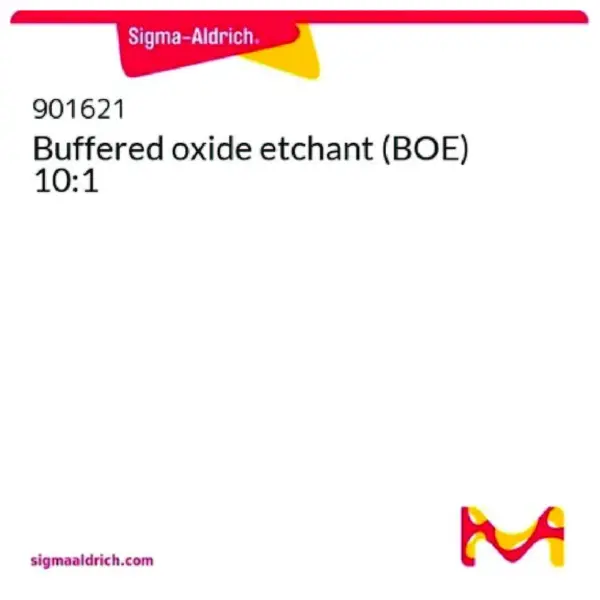
Buffered oxide etchant (BOE) 10:1 – Sigma-Aldrich
RM660.00Brand:
Sigma-Aldrich
Synonyms
BHF, Buffered HF
Cas No.
–
General Descriptions
Buffered oxide etchant (BOE) is a wet etchant used in microfabrication. Its primary use is in etching thin films of silicon dioxide (SiO2) or silicon nitride (Si3N4). It is a mixture of a buffering agent, such as ammonium fluoride (NH4F), and hydrofluoric acid (HF). Concentrated HF etches silicon dioxide too quickly for good process control and also peels the photoresist used in lithographic patterning.
Application
Buffered oxide etchant (BOE) 10:1 can be used in the etching of titanium carbide, which can be used in microelectromechanical systems (MEMS). It can also be used in the etching of spin-on-dopant (SOD) for the development of conductor-insulator-conductor tunnelling diodes. It can also be used to enhance the surface of fused quartz devices.

Buffered oxide etchant (BOE) 6:1 – Sigma-Aldrich
RM660.00Brand:
Sigma-Aldrich
Synonyms
BHF, Buffered HF
Cas No.
–
General Descriptions
BOE 6:1 is 6 parts by volume of 40% ammonium fluoride and 1 part by volume of 49% HF.
Buffered oxide etchant (BOE) is a wet etchant used in microfabrication. Its primary use is in etching thin films of silicon dioxide (SiO2) or silicon nitride (Si3N4). It is a mixture of a buffering agent, such as ammonium fluoride (NH4F), and hydrofluoric acid (HF). Concentrated HF etches silicon dioxide too quickly for good process control and also peels the photoresist used in lithographic patterning.
Application
Buffered oxide etchant (BOE) 6:1 can be used in the oxide removal of AlGaN/GaN-based high electron mobility transistors for gate photolithography. It can be used in a buffer oxide etchant method for the fabrication of a micro biochip.
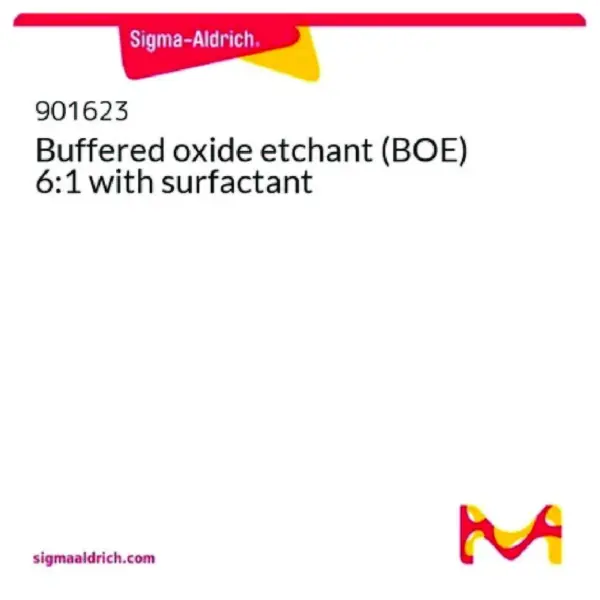
Buffered oxide etchant (BOE) 6:1 with surfactant – Sigma-Aldrich
RM621.00Brand:
Sigma-Aldrich
Synonyms
BHF, Buffered HF
Cas No.
–
General Descriptions
Buffered oxide etchant (BOE) is a wet etchant used in microfabrication. Its primary use is in etching thin films of silicon dioxide (SiO2) or silicon nitride (Si3N4). It is a mixture of a buffering agent, such as ammonium fluoride (NH4F), and hydrofluoric acid (HF). Concentrated HF etches silicon dioxide too quickly for good process control and also peels photoresist used in lithographic patterning.
Application
Buffered oxide etchant (BOE) 6:1 with surfactant may be used in the oxide removal of AlGaN/GaN-based high electron mobility transistors for gate photolithography.[1][2] It may also be used in a buffer oxide etchant method for the fabrication of a micro biochip.

Buffered Peptone Water (ISO) 500g
RM279.00Brand:
Thermo ScientificTM OxoidTM
Pre-enrich food samples prior to the isolation of Salmonella species using Thermo Scientific™ Oxoid™ Buffered Peptone Water (ISO) (Dehydrated). Buffered Peptone Water is a non-selective pre-enrichment medium and is tested in accordance with ISO 6579 and ISO 11133:2014. It also provides conditions for resuscitation of cells that have been injured by processes of food preservation.
Buffered Peptone Water (ISO), Oxoid Composition
| Typical Formula* | gm/litre |
| Enzymatic digest of casein | 10.0 |
| Sodium chloride | 5.0 |
| Disodium hydrogen phosphate (anhydrous) | 3.5 |
| Potassium dihydrogen phosphate | 1.5 |
| pH 7.0 ± 0.2 @ 25°C |
Buffered Peptone Water (ISO), Oxoid Preparation:
Add 20.0g of Buffered Peptone Water (ISO) to 1 litre of distilled water. Mix well and distribute into final containers. Sterilise by autoclaving at 121°C for 15 minutes.
Method of use
The sample is added to Buffered Peptone Water (ISO) at a ratio of 1:10, and incubated at 36°C ± 2°C for 16-20 hours before transfer to selective enrichment media.
Storage conditions and Shelf life
Store the dehydrated medium at 10-30°C and use before the expiry date on the label.



